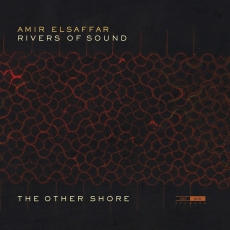Amir ElSaffar & Rivers of Sound - The Other Shore - Jazz Trail
Trumpeter, composer and bandleader Amir ElSaffar has been expressing his Iraqi-American heritage and artistic identity through successful albums that blend the traditional Iraqi maqam and modern jazz. The Other Shore, the highly anticipated follow-up to Not Two (New Amsterdam, 2017), marks the second time on record he's in the command of the 17-piece Rivers of Sound Orchestra, an extension of the Two Rivers Ensemble. There was one single change in its workforce - John Escreet sits in the piano chair that previously belonged to Craig Taborn.
The imaginative cross-cultural mysticism of “Dhuha” floats with ElSaffar chants and an exotic instrumentation where a robust versatility lurks behind the apparent languidness. This is materialized in a passage prodded by a groove in five where ostinatos serve as a filling during a saxophone solo. The trumpet detaches from its counterparts in the last section, and then the movement is slowed down until fading quietly.
“Transformations” boasts an initial 12-beat cycle bass-oud groove before juxtaposing full-fledged rhythms with a dancing perspective in mind; “Lightning Flash” adjusts the density of its passages by giving it a simultaneously elegant and brazenly energizing feel; and “Medmi” terminates the session in calm waves.
“Reaching Upward” is one of my favorite pieces, and its magic erupts with West classical splendor as the stringed instruments (oud, violin, buzuk) come to the fore. After that, a percolating rhythmic flux in five finds its way, welcoming the inside/outside maneuvers from Belgian altoist Fabrizio Cassol, the intricate chromaticism of guitarist Miles Okazaki, and the microtonal pitches of ElSaffar on trumpet. Just as exciting is the breezily asymmetric {17+16} “Ashaa”, whose arresting rhythm patterns help to create moments of rare beauty. The lutes stand out ahead of a nearly-funkified fusion. Bassist Carlo DeRosa shares his thoughts, and the piece ends brightly in five after a Middle Eastern dance where ElSaffar interacts with another horn player.
Imbued with passionate lyricism, this music feels both cerebral and freewheeling. Composition and improvisation play an equally important role and there’s plenty of good, hybrid sonorities for one’s listening pleasure.

